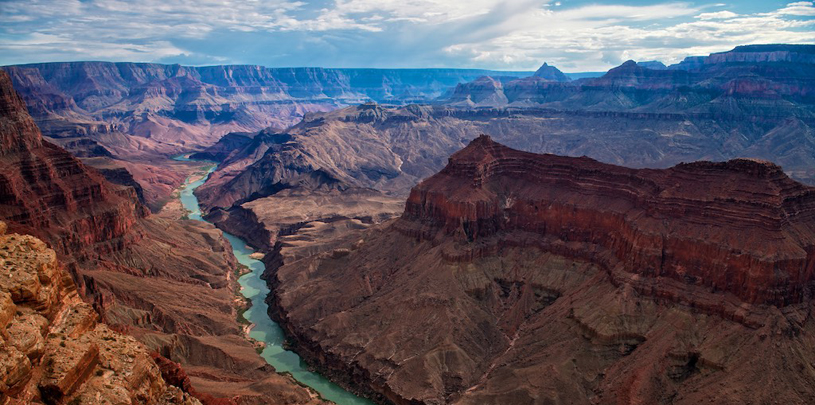
 by Anne Mariah Tapp, Energy Director
by Anne Mariah Tapp, Energy Director
“Evidence cited by Plaintiffs suggests only a small likelihood of harm,” Judge David Campbell stated in his May 26 decision denying our request to halt operations at the Canyon Uranium Mine, located only six miles from the Grand Canyon’s south rim. Judge Campbell relied, in part, on a Bureau of Land Management study that found uranium mining in the Grand Canyon region posed “a ‘low potential for major adverse effects’ to groundwater.” Based on this and other factors, Campbell allowed the Canyon Mine to proceed despite an obsolete plan of operations and environmental review that was last performed in 1986.
“Small likelihood” and “low potential” aside, it’s time to consider the worst-case scenario. This is uranium ore we’re talking about. It threatens the Grand Canyon and the Colorado River with radioactive contamination. In recognition of that threat and to protect the Grand Canyon and the Colorado River, former Secretary of the Interior Ken Salazar withdrew over one million acres surrounding Grand Canyon from new uranium mining, banning any new uranium mines in the region until 2032. But with uranium mining set to resume at the Canyon Mine in June, the time has come to ask: how much are we willing to risk? Is allowing a Canadian company to mine uranium for private profit (while paying $0 in royalties to the federal government) worth risking that worst-case scenario of permanently irradiating the Grand Canyon region? Is it worth contaminating the Grand Canyon’s seeps and springs? Is it worth the existential risk of permanently contaminating the homeland of the Havasupai people and their only source of drinking water?
And, making matters worse, history indicates that the risk of radioactive contamination is very real and even likely. The uranium industry has left the Colorado Plateau with a toxic legacy of contamination that we are still struggling to mitigate and contain. Look at the pattern: the mining and milling disasters across the Navajo Nation; the former Atlas Uranium Mill currently being relocated from the banks of the Colorado River in Moab, Utah at the cost of over $1 billion dollars; the former Orphan Mine site located on the south rim of Grand Canyon, which is now a superfund being cleaned up by taxpayer dollars. The evidence is clear: uranium mining poses a high risk and low rewards for the Grand Canyon and the Colorado Plateau.
In the next few weeks, we will appeal to the Ninth Circuit Court of Appeals to prevent Energy Fuels, Inc from drilling the shaft and beginning to mine uranium at the Canyon Mine. We are also petitioning the Forest Service and the Bureau of Land Management to change the obsolete regulations that allow uranium mines to pause operations—sometimes for years—and resume them at the drop of a hat without new environmental review and with a complete disregard for the scientific discoveries and technological improvements of intervening years. Add your voice to the petition. In close cooperation with our partners – the Havasupai Tribe, the Sierra Club, and the Center for Biological Diversity, and people like you – we are doing everything we can to protect the Grand Canyon and Colorado River from radioactive contamination.
A small victory in the legal case challenging Daneros uranium mine, near Bears Ears National Monument.
Read MoreGroundwater pumping at a uranium mine near the Grand Canyon will affect the canyon's springs, scientists says.
Read MoreA rally in Salt Lake City followed by a spiritual walk in White Mesa demonstrate the Ute community's determination to see uranium mill close.
Read More